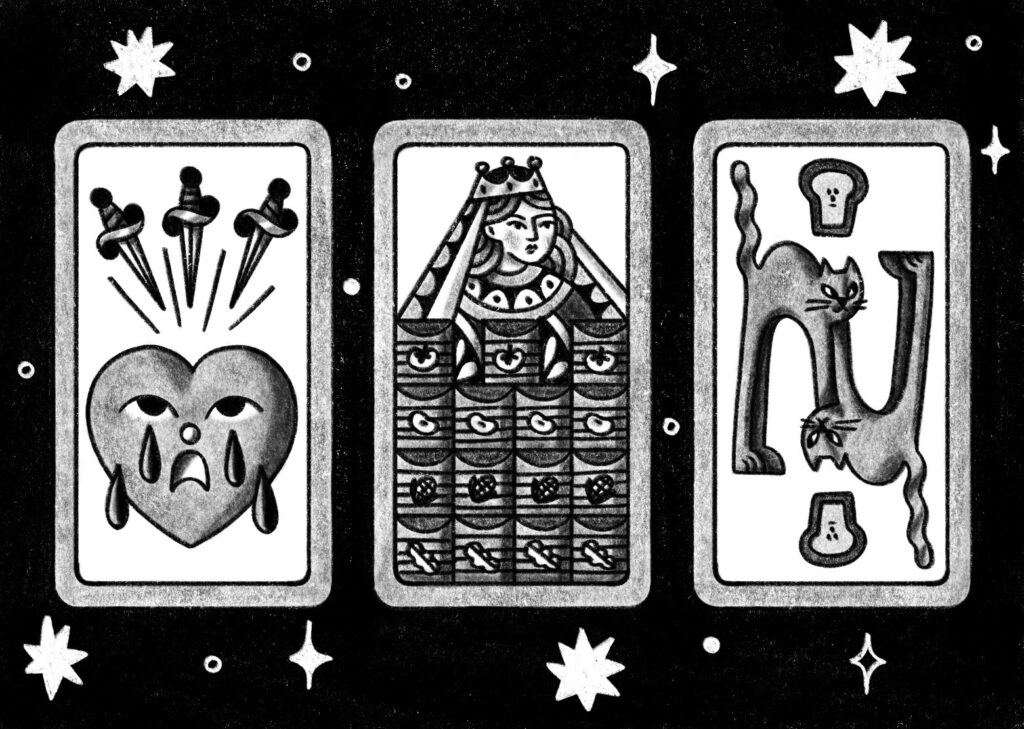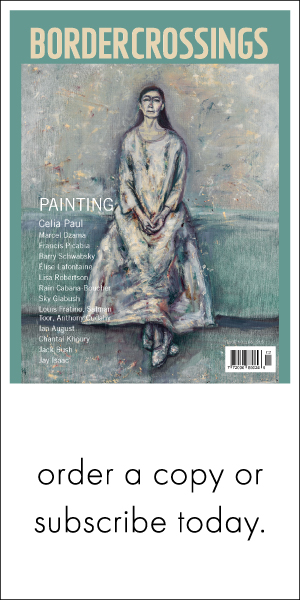As legend has it, a vengeful witch once placed a spell on all McQuinn women. Their fate? Generations of terrific misfortune. Each of the Love men, on the other hand, suffers a fatal heart attack before his forty-eighth birthday. It’s no surprise then that the young people in the latest accursed generation of the McQuinn-Love clan have little hope for the future. Over a decade since their father’s death at forty-one, the siblings Thom and Kitten are both resigned to their untimely fates. The twenty-eight-year-old man loafs around at home under the watchful eye of their overbearing mother, Queena, while his sister, a few months shy of thirty, has moved back across the country after a failed attempt to escape a maternal string of bad luck. Steeped in the supernatural — restless ghosts, ancestral curses, witchcraft, and the like — Michelle Hébert’s dark family saga, Every Little Thing She Does Is Magic, proves both engrossing and heart-wrenching.
The novel begins in 2000 with Kitten’s return to her childhood home in sleepy Paradise Valley, Nova Scotia, her infant daughter, Pixie, in tow. Her unexpected arrival without her fiancé, Matt, puzzles family and prying neighbours alike. “So, what, then? Did he leave you?” Thom asks. Reluctant to answer any questions about her relationship, Kitty isolates herself in her teenage bedroom, self-medicating with wine coolers, listening to old high school mixtapes, and sleeping for days at a time. Her mother is also known to avoid uncomfortable conversations. Ever since her sister Nerida’s tragic drowning and the later loss of her husband, Queena has been riddled with anxiety. In a futile attempt to protect her remaining family, the former beauty queen preserves her home’s antiquated decor (untouched since her husband Stubby’s death in 1987), stockpiles canned goods, and constructs an elaborate bomb shelter. Shortly after arriving, Kitty wanders through the house: “God knows, preservation’s what my mother’s all about.”

With characters who must overcome their fate and quell paralyzing uncertainty.
Gwendoline Le Cunff
When Kitty stumbles on an old Rider-Waite tarot deck in her late aunt’s bedroom, memories of her childhood fascination with the occult come flooding back. She recalls learning hexes and banishing spells to try to prevent her father from succumbing to the Love Heart. “If I could remember how to read them,” she muses about the cards, “maybe they could tell me how to fix things with Matt.” Symbolic cards begin revealing themselves and appearing in strange places, along with the crystals she used decades before. First, the Fool emerges as an omen for leaving the past behind without a vision for the future. Later, the Five of Cups appears to her as a symbol of mourning, separation, and abandonment. “I had the weirdest feeling someone was watching me,” she says, sensing a protective spirit trying to communicate with her. As Kitty regains her footing at home, old habits and new challenges present a chance to leave her dark past behind and break the decades-old curse on her family.
Despite the novel’s non-linear plot — which jumps between younger Kitty’s perspectives, sporadic letters from her family members, and the present day — Every Little Thing She Does Is Magic travels swiftly forward. Kitty’s unreliable narration lends itself to a broader feeling of intrigue and mystery. The incomplete details that characters choose to reveal bring their credibility into question. How can Kitty, who is so critical of Queena’s parenting, leave Pixie at home without supervision, let alone asleep on a pile of discarded clothes? And why leave Matt — the loving fiancé who made her see in “thrilling and dazzling technicolour,” whose companionship made “everything fit together”— back in British Columbia?
Hébert’s greatest strength is her vivid characterization of Queena and Kitty. Their fractured mother-daughter bond is reminiscent of Adora Crellin and Camille Preaker’s dynamic in Gillian Flynn’s Sharp Objects, another novel that explores the complex relationship between protection, self-image, and harm. Kitty remembers how her grieving mother left her children to fend for themselves after Stubby’s death: “There weren’t any clean spoons. There wasn’t clean anything. I ate handfuls of stale Lucky Charms out of the box and pushed aside our empty liquor bottles in order to find a spot to sit.” When Kitty attempts suicide at age fifteen because of her mother’s neglect, Queena refuses to acknowledge her role in the incident. Unconcerned with her daughter’s well-being, she worries vainly what the neighbours might think: “Honestly, Kitten, how could you do this to me? After what I’ve already been through?” Hébert shows the origin of the overlapping traumas behind Queena and Kitty’s collapsing relationship. She portrays both characters as flawed, complicated individuals whose choices are shaped by their past and mental instability.
A tarot reader herself, Hébert appreciates our innate desire for answers. Often the idea of fate eases the burden of decision. Every Little Thing She Does Is Magic suggests inner strength as an alternative to both predestiny and the paralyzing uncertainty that clouds Kitty, Queena, and Thom’s lives. In a poignant moment of worry, Kitty wonders, “But what if I found the treasure and let it go? What if I’ve made all the wrong decisions?” For her part, the author embraces the self as an antidote to the external chaos with which her characters struggle. Only by recognizing our power can we move toward a better future. As Kitty’s aunt puts it, “My darling girl. What if the treasure is you?”
Caroline Noël is the magazine’s editorial coordinator.

